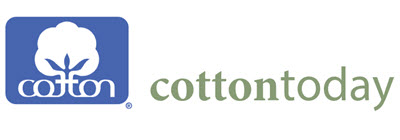Cotton Properties Legend
The tables below define the properties represented in the Quality Summary, updated each week during the crop season.
In 1993, the classer grading system was changed. Under the old system of grading, the classer determined a composite grade of color and trash content; and bales that contained bark and grass were reduced one or more grade levels. Under the current system, the color and leaf grades are determined by the HVI® line and the classer notes whether there is bark or grass present in the bale and designates that as an extraneous matter call without any reduction in the grade. Each color grade percentage will include all levels of leaf. For example, the 39.5% of the bales classed in Florence, SC in 1998 with SLM white color grade includes all bales at all leaf levels (2-7 leaf) with SLM white color.
| White Grades | |
| MID+ | Percent of bales receiving grades of 11, 21, or 31. |
| SLM | Percent of bales receiving a grade of 41. |
| LM- | Percent of bales receiving grades of 51, 61, or 71. |
| TOT | Total percentage of bales classified as “White.” |
| Light Spotted Grades | |
| MID+ | Percent of bales receiving grades of 12, 22, or 32. |
| SLM | Percent of bales receiving a grade of 42. |
| LM- | Percent of bales receiving grades of 52 or 62. |
| TOT | Total percentage of bales classified “Light Spotted.” |
| Other/Barkey Grades | |
| OTHER GRADES | Percentage of bales classed as “Spotted,” “Tinged,” “Yellow- Stained,” or “Below Grade.” |
| BARKY GRADES | Percentage of bales from each classing office containing bark. |
| Fiber Properties | |
| MIC unit | Micronaire (MIC) is a measure of the air permeabilty of compressed cotton fibers. It is often used as an indication of fiber fineness and maturity. Micronaire readings of 37-42 are premium, 35-36 or 43-49 are base, and 34-and-under or 50-and-higher are discount. Micronaire is measured using the HVI® line. |
| LEN 32/in | Staple Length is the average of the longest 50% of the fibers (Upper Half Mean Length). It is measured in 100th’s and in 32’s of an inch. For the conversion chart, see the USDA’s Classification of Cotton. Length is measured by the HVI® line. |
| LUI (%) | Length Uniformity Index (LUI) is the ratio (given as a percent) of the average length, to the upper-half-mean-length (see adjacent description). LUI is an indicator of how fibers will perform in the spinning of yarn. LUI is measured using the HVI® line. |
| STR g/t | Strength (STR) reports the force, in grams, required to break a bundle of fibers one tex unit in size. A tex unit is the weight in grams of 1,000 meters of fiber. For more information, see the USDA’s Classification of Cotton. Strength is measured on the HVI® line. |
| TRASH (%) | Trash content is a measure of the non-lint particles (like leaf, bark) in the cotton. It is given as the percentage of surface area occupied by trash when a cotton sample is scanned by a camera. Trash is also measured by the HVI® line. |
| LGRD INDEX | Leaf grade index (LGRD) is a measure of the overall grade of the cotton. It is a weighted average of the bales in each leaf category. The weights were adjusted in 1998, so values given after this date will be slightly higher in relation to values from comparable data in past years. |
| NO. BALES | Lists the total number of bales classed so far this season. |
| LEN inch | Length as defined in the LEN 32/in column, only represented in inches. |









